
It all started with a few fossils and comic books. As a child, California- and Milan-based media and entertainment entrepreneur Jason Swartz collected the odds and ends, igniting a passion that moved onto vinyl records and emerging artists as he got older and his business quickly grew. The Alliance Talent founder now stocks his home with works by artists including Cecily Brown, Christopher Wool, Anna Park, and Michaela Yearwood-Dan.
The collector hates for works to sit in storage, a sentiment that finds his expanding trove leaking into the homes of friends and family, and taking up residence at institutions including MOCA Los Angeles, the Hammer Museum at UCLA, the Nasher Museum of Art at Duke, and the Pérez Art Museum Miami. Here, Swartz shares the unique places he's looking to discover his next obsessions.

How does traveling influence your connection to the arts, and the artists you are interested in collecting?
The artists I collect have inspired me to travel to meet them. For me, collecting art is very much about the human connection, and it's something that makes the journey. It’s different than other creative interests where one can closely follow music, film, or fashion, but never meet the creator behind the work.
Where does the story of your personal collection begin?
I’ve always loved collecting. As a child it was fossils and stones, as a teen rare records and comics, and as an adult it’s been contemporary art. The first significant work I acquired was Damsel by Tschabalala Self in 2019. It was such a powerful image. I was immediately drawn to it despite 50 other amazing artists in the group show. I made a giant leap of faith to not only acquire the work, but to donate it as a promised gift to MOCA Los Angeles. Collectively, that experience really set the trajectory for my art collecting story ahead.
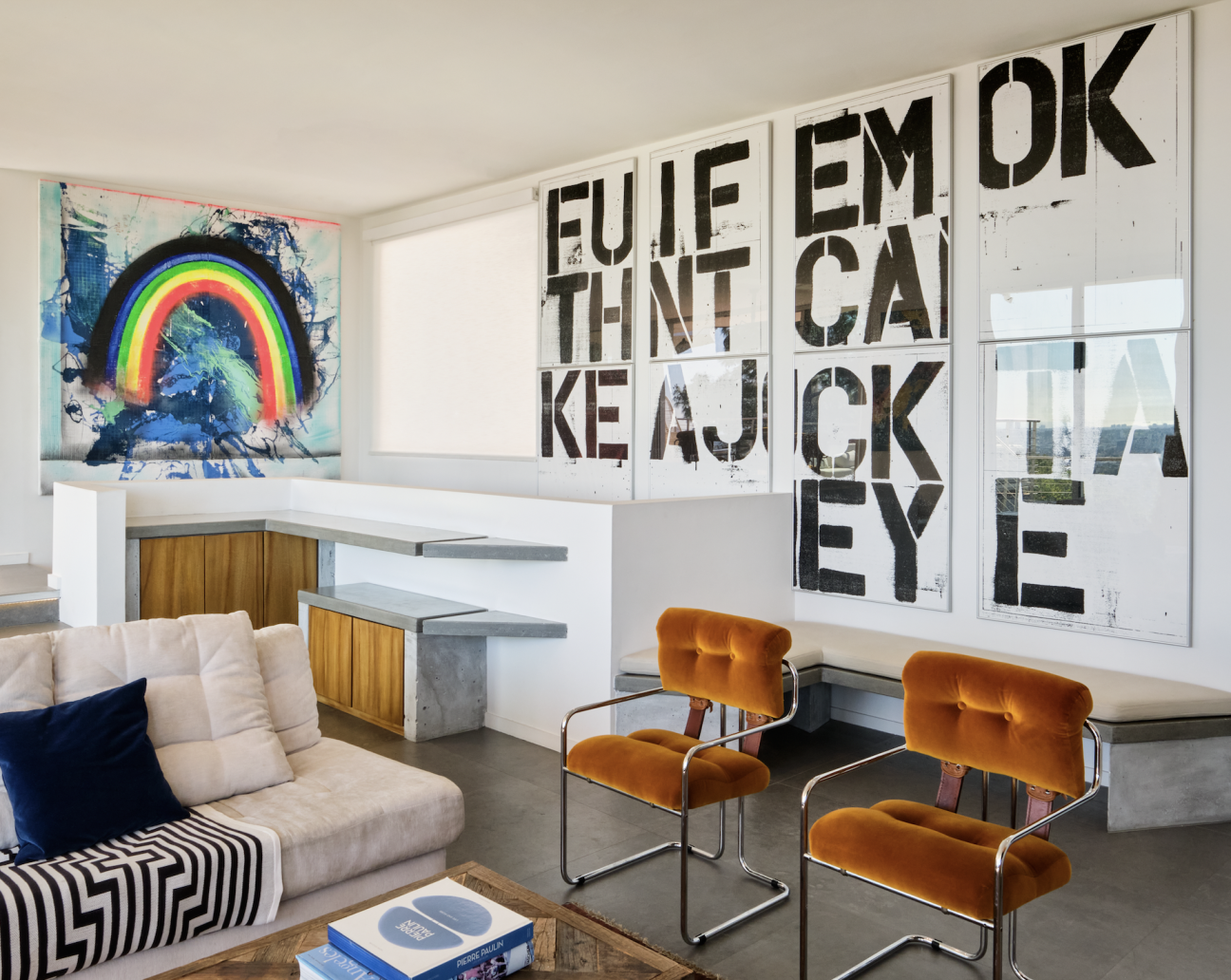
Which works provoke the most conversation from visitors?
Vaughn Spann’s Blue State of Mind (Big Black Rainbow) always gets people talking. On one hand, it's a beautiful abstract rainbow that invites people in. On the other, it's a symbol of protest connected to the tragic murder of African American youth Trayvon Martin who was shot with Skittles in his pocket. Skittles’s slogan, "Taste the Rainbow," led to the image’s widespread use in one of the first mass trending social media protests of the 21st century, which took place in 2012. And to think Instagram had only just launched two years earlier.
How do you discover new artists and/or work?
The past three years within and post-pandemic it's been social media, to no surprise, and endless art fair conversations. That said, I love going A-to-Z through Wikipedia bios of Google's “Top 200 Artists of the 20th Century to Now.” People often associate discovery with emerging artists, but I'm excited to turn my focus back to uncovering hidden gems of the past.
The stories are amazing, and often the best were simply overlooked due to societal limitations or being in the shadow of one of the greatest. It will be fun to see which collectors evolve to “digging in the crates” and really putting in the hours to read and discover work from the past. It could be an interesting collector shift in response to many of us who so recently relied heavily on social media and fair whispers.
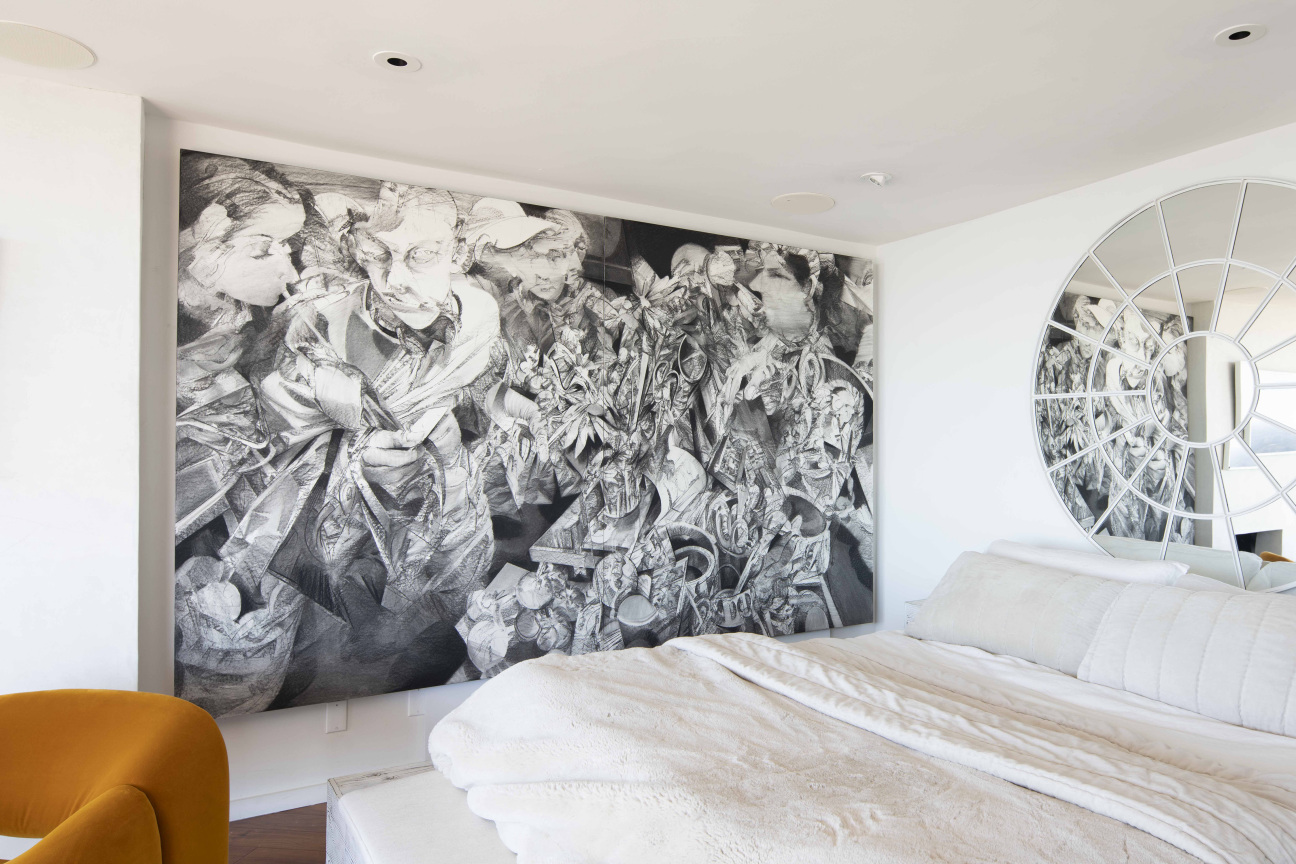
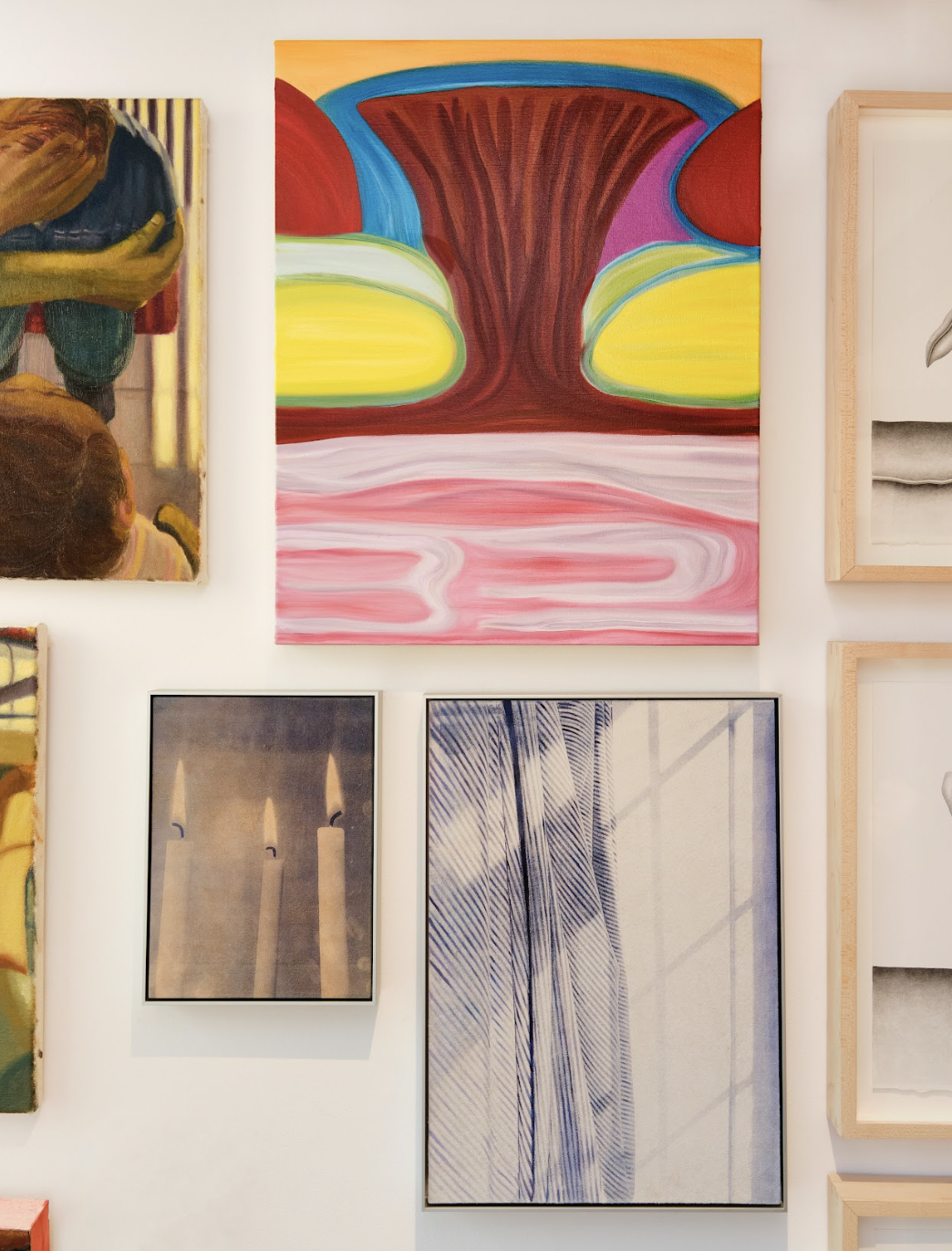
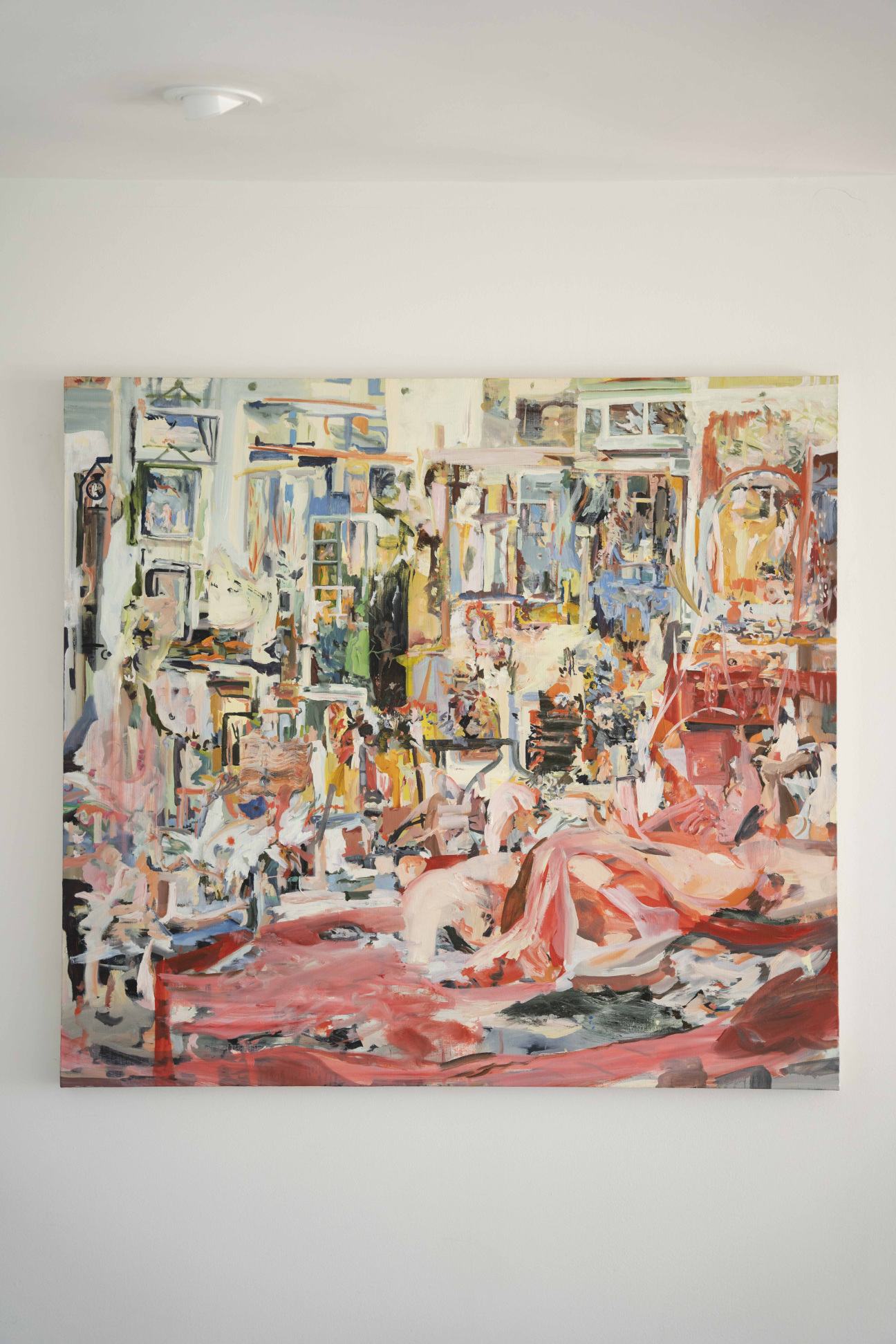
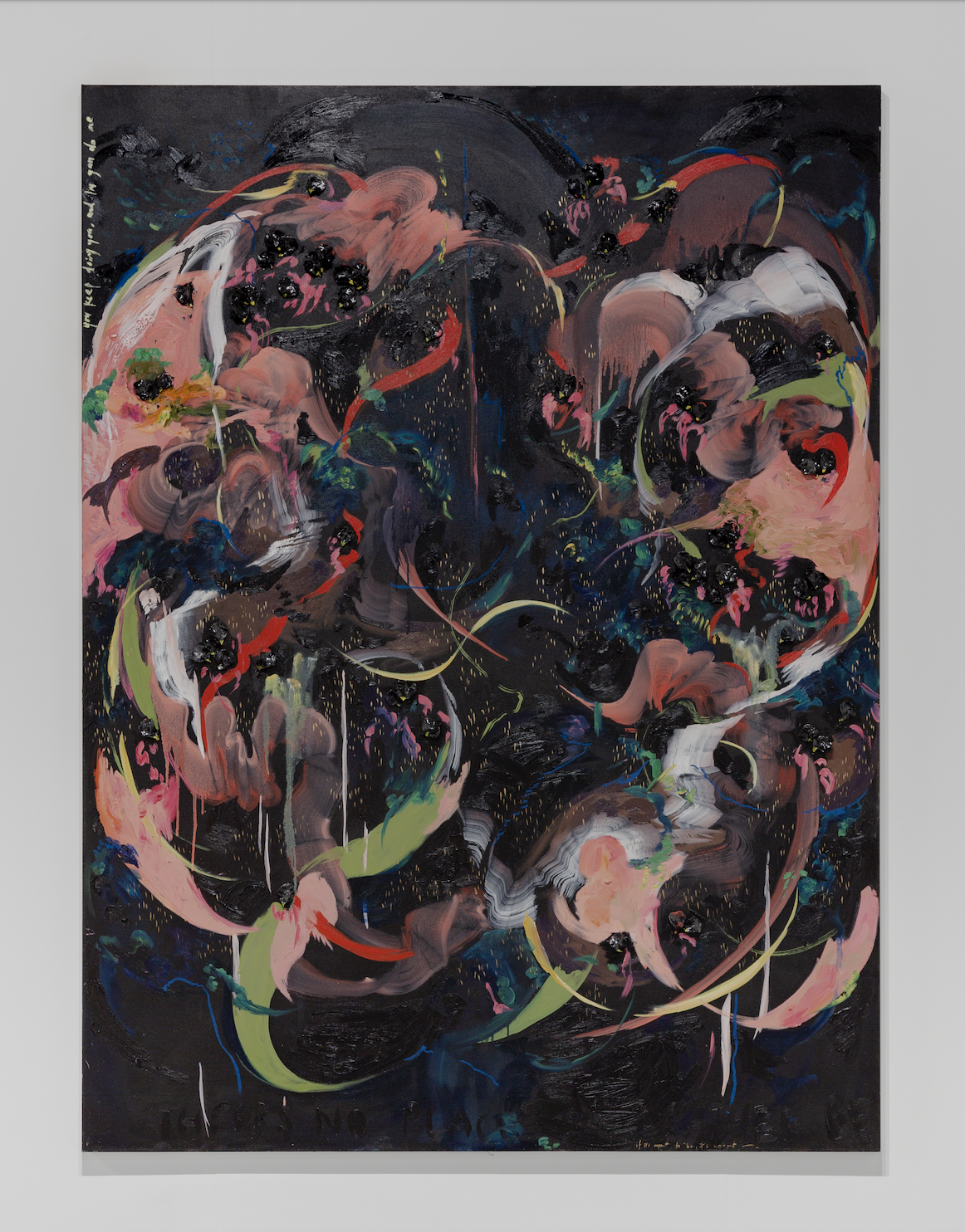
Which artist are you currently most excited about and why?
On the younger side, I’m excited about Michaela Yearwood-Dan, Lauren Quin, and Anna Park. These ladies are stars, and each play on different emblematic themes that I feel will exemplify contemporary art in the early 21st century. Blackness, queerness, femininity, mental health, sampling of modern cultural tropes, and even the existence of dual realities.
If they can stay focused, and evolve their practice, they will be the blue-chip names of tomorrow. Of the historic rare gems, Pauline Boty from the British Pop art scene has an amazing story and is a good example of many special historic names whose work and story I feel deserve more shine.
What was the most challenging piece in your personal collection to acquire?
There have been a lot of battles to acquire work over the last five years, perhaps too many battles, travels, and carrots dangled. I feel collecting since the pandemic has become contagious, but in a bit of an unhealthy way. I'm looking forward to things calming down just enough so we can get back to really connecting with work. [I want to] take time with galleries, the artists, and be able to make discerning decisions without pressures that if I don't acquire something now, it will be forever out of reach by tomorrow.

Is there one piece that got away, or that you still think about?
For every work I felt got away, there’s a handful I acquired and felt I should have taken more time to see in person and get to know the artist’s practice. That’s something I've set as a rule on for all acquisition recently: I won't consider it till I've at least seen a good number of the works in person.
I also really enjoy donating work. It’s a tremendous feeling to put in all the effort to get an artist get placed in a major public museum, but it’s always bittersweet. When the work leaves, it's never easy to let it go. I definitely miss that Tschabalala Self masterpiece, and quite a few others.
Want to read more from collectors around the world? Read Oleg Guerrand-Hermés's six-step process for discovering new artists, David Cancel's strategy for helping Puerto Rican artists find their way into museums, or how Erin Leider-Pariser discovered collecting while working at Beth Rudin DeWoody's personal trainer.










 in your life?
in your life?

